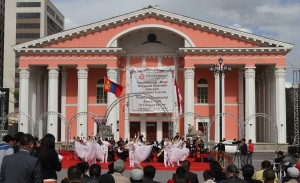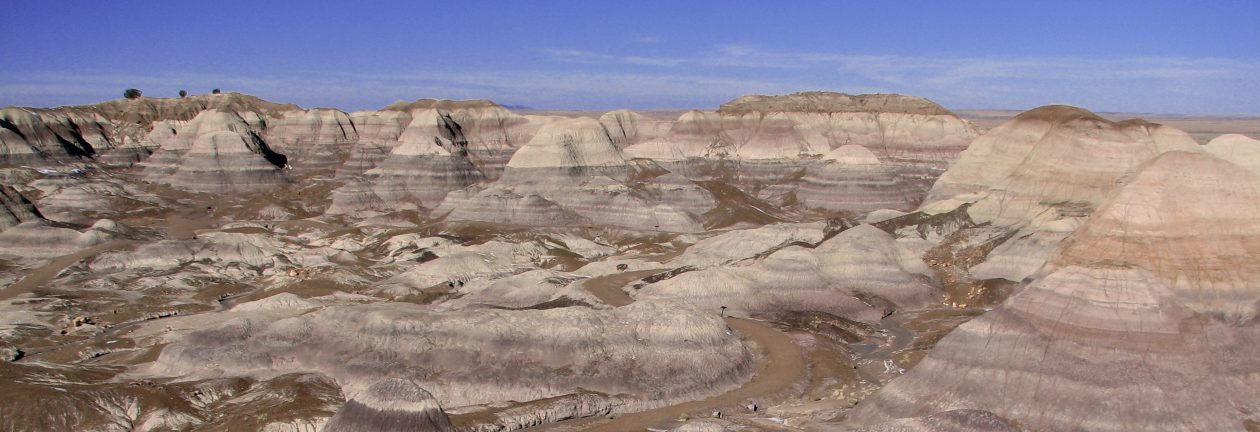Ulaanbaatar, Mongolia
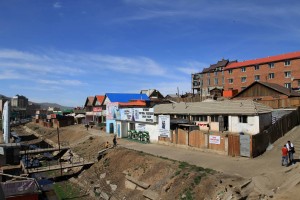
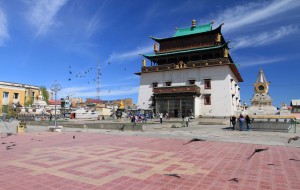
The most famous site in Ulaanbaatar, and possibly Mongolia (certainly as a symbol of freedom), is the Janraisig Temple in the Gandan Temple complex, located west of downtown, in a shanty-looking neighborhood. This was my first destination on this bright and sunny moor. The entire complex has ten temples spread throughout – including Janraisig Temple. Also, this place is full of pigeons (think Hitchcock’s ‘The Birds’) and merchants selling bird feed, drawing in ever more pigeons (stray dogs can be found looking for handouts here as well). Of course, many Buddhist monks can be seen walking the premises too.
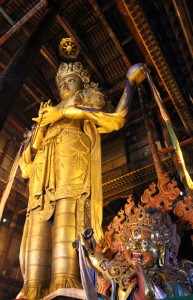
In the Janraisig Temple, stands a giant statue of Migjid Janraisig (a Buddhist bodhisattva who embodies compassion) gilded with gold leaf. Inside the temple, there are also many prayer wheels (metal cylinders with scrolls in them which contain sutras). Worshipers enter the temple, circle the statue clockwise, and spin the prayer wheels as they walk – spinning the wheels is certainly easier and quicker than reciting the prayers orally. I also noticed that as worshipers exit the temple, they do so backwards, always facing the Buddha.
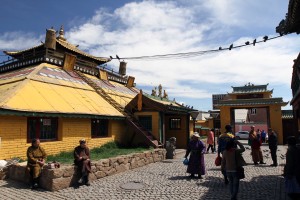
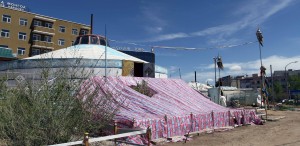
After touring the temple grounds, I headed east, passing additional temples and many Soviet looking buildings. I then decided to have lunch at a Ukrainian restaurant (because God knows if I’ll ever get to visit that country given their current problems) so that I may at the very least get a taste of their country.
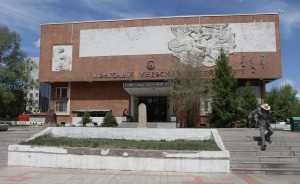
Next, I went inside the National Museum of Mongolia to learn about their history from Paleolithic to Modern times; from cave burials, deer stones, and traditional clothing to the country’s progress made since independence from the USSR (gained in 1990). I also learned that in 1990, 95% of businesses were state owned and that now 72% are privately owned, so free-market capitalism has helped to progress this country toward prosperity, but it still has a long way to go. Note on the traditional clothing: If you’ve ever watched Lucas’ uninspired directorial efforts, then you’ve seen his Queen character dress up exactly as past female Mongolian nobles did during their weddings or state ceremonies (so much for originality).
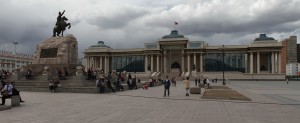
I then walked over to Sühkbaatar Square to view the Government Palace with it’s giant statues of the three great Khans (Chinggis, Kublai, and Ögedei). When I reached the square, I happened upon a ceremony between the city of Ulaanbaatar and Vienna. The mayors (I think they were the mayors of Vienna and Ulaanbaatar, though I must admit I missed that detail) of each city gave speeches and then danced together to Johann Strauss’ ‘By the Beautiful Blue Danube‘ (Ulaanbaatar’s mayor was male, Vienna’s mayor was female). Ulaanbaatar provided the orchestra, as well as the beautiful ballet and waltz dancers to perform for the audience. Afterwards I relaxed in the hostel for a while before setting out for dinner and beer, thus concluding my night.
